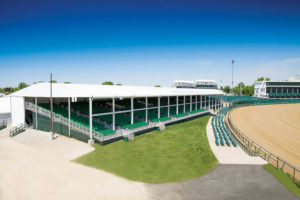By Janice Kleinschmidt
Collectors, gallery owners, curators and designers who make an annual pilgrimage to Florida for the high-profile Art Basel and Design Miami fairs each December have come to expect venues that are as creative and cutting edge as the works inside them.
“Every year, there is a new look, and people understand the artwork is not only on the wall, but also the tent itself,” says Alain Perez, co-owner and CEO of Eventstar Structures. In December, his Miami-based company provided 900,000 square feet of temporary structure for Design Miami and peripheral fairs attached to Art Basel.
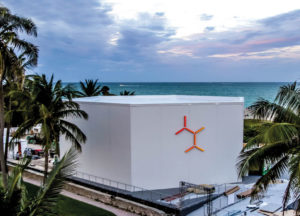
“I met Alain when we were trying to put a roof between two buildings in the design district,” recalls Ty Bassett, director of logistics for Design Miami. “I got his number through a friend of a friend who said he’s the go-to person for the impossible job.
“Alain is a fascinating person,” Bassett adds. “I don’t know how anyone can function with that level of stress around Art Basel. He seems to manage it very well.”
Not long after his first contact with Perez, a New York firm working with Design Miami came up with a design for a clearspan tent with a reverse pitch on the facade.
“It was a combination of three or four tents that was a very complicated process to realize,” Bassett says. “It’s one thing if someone comes up with a design; it’s another to execute it. That’s what Eventstar is really good at. They executed all the engineering and fabricated it. They’re a full-service facility.”
Many of the projects Eventstar has completed for Design Miami have won awards, Bassett says. The company captured three IFAI International Achievement Awards in 2014, including the Award of Excellence in corporate tent rental for a structure that circled a fountain at the 2013 International Fine Arts Exposition in Miami and the Outstanding Achievement Award in corporate tent rental for two venues connected by a 280-foot covered walkway over New York City’s 12th Avenue for a three-day Super Bowl celebration. The latter was installed and disassembled amid very unusual Miami weather: snow, ice and persistent bracing winds.
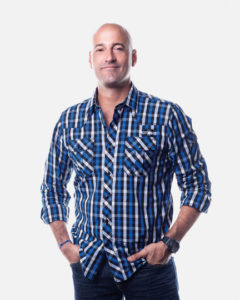 Stretching the canvas
Stretching the canvas
Eventstar began manufacturing its own tents in its two-year infancy, in 1999, for a Super Bowl event in Miami. According to Perez, the idea was that doing so would help his company adjust more easily to the ever-changing demands of its clients.
“Transitioning from carrying other brands to manufacturing our own products has been a road that we had to adjust to along the way,” he says. “It took a while to figure out, so we filtered out all the other products and built one standard component for any tent structure.
“South Florida does not have a lot of infrastructure as far as ballrooms and convention space that you would have in other markets,” Perez says. “When companies are having big events, they need tenting. That, combined with south Florida being a place where people want to show off, creates the circumstances for us. And that led to having an engineering/design department to come up with designs and manufacturing them.”
Perez counts three seminal moments in Eventstar’s progression. The first was the Super Bowl structure from 1999.
“We went from being a tent rental company with market inventory to manufacturing and delivering a multilevel structure with an elevator,” he says. “We realized we had a long road ahead of us, but we wanted to go that direction.”
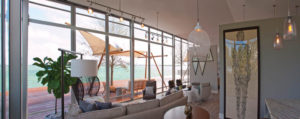
The next pivot point was Eventstar’s first project for Design Miami in 2004, involving a 35-foot-tall wall wrapped around a building—a high-performance design that challenged the company’s engineering department and marked the beginning of Eventstar’s many collaborations with renowned architects.
“Every year we have done a new, unique structure [for Design Miami],” Perez says.
The third seminal project came in 2009 when Audi solicited a bid from Eventstar to design and deliver a 50-foot-tall movable building that could support production equipment for the worldwide launch of the Audi A8. That project snagged the company an IFAI International Achievement Award for Tent Manufacturing in 2010.
“That event brought us to where we could take a temporary structure outside of tenting,” Perez says. “It had anything you could put in a convention center. It had kinetic doors, supported cars and had a lower-level kitchen. That was Disney World. To be able to work on projects like that, what can be more exciting?”
Although Eventstar has expanded its staff by only about 10 percent over the past few years, revenue has grown 50 to 60 percent.
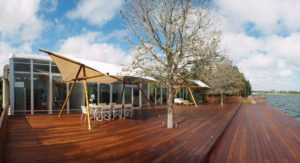
“We have done that by working with specialized labor companies that can help us with some of our tenting, offsetting a lion’s share of labor costs,” Perez says.
In addition to its 10-acre complex of offices, manufacturing and storage at its Miami headquarters, Eventstar has a storage and sales facility in St. Lucia, a storage yard in Dutch St. Maarten for projects in the Caribbean and a storage yard in New Jersey to service projects in New York.
The latest brushstrokes
In the last couple of years, Eventstar has raised the bar on its manufacturing capacity by converting to all computer numerical control (CNC) machinery. The company’s focus now is on developing what Perez calls “the next generation” of temporary buildings: aluminum-frame, horizontal-roof structures with fabric membranes over EPS-foam roof panels. In mid-December, Eventstar announced its plans to launch its Centro Series this year in more than 24 variations, noting that they could range from covering 270 square feet to more than 200,000 square feet.
“It’s about 40 percent stronger than a typical large tent, yet redeployable and adjustable,” Perez says. “The roof-load capacity is 30 pounds per square foot of snow load.”
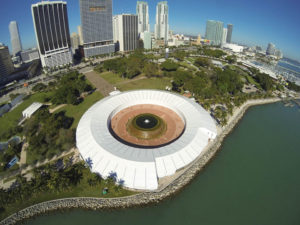
Another goal for 2015 is to increase Eventstar’s rental inventory by at least 30 percent. At the end of 2014, the company could cover 3 million square feet.
“We have the capacity to manufacture, in fabric, probably 40,000 square feet a week,” he says. In addition to supplying its own inventory, Eventstar sells its tents, mostly to end users.
The company is also introducing a modular flooring product that is quick to assemble and offers a higher-per-square-foot load capacity than existing products.
“We have to be an innovator because, in any field, it’s the edge you need to stay ahead of competition,” Perez says. “In our particular circumstances, we came into an industry that was somewhat defined, and so I think we always felt we wanted to have our own identity and move our focus to what we can do that’s different than the competition. Being different necessitates that we have had to become innovators. It excites me to come to the office in the morning and know we are working on a new product or taking an existing one to a new level.”
Going to the next level, he says, has a lot to do with a gut feeling. “I would love to say that we have a systematic approach to these things, but we have grown by market demand. We develop a product to demand and attack it with our manufacturing team. If we realize we need a change, we change it.
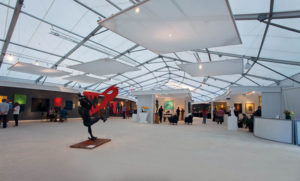
“Years ago, we wouldn’t think about coming outside of the tent,” Perez adds. “We would just provide the shell, and the client would build it out as needed. More and more, we are asked to provide the entire solution.”
His formula for success is one that other companies can follow:
“You identify more opportunities for designing and manufacturing—solutions for problems that have never been addressed with a certain approach.”
Janice Kleinschmidt is an editor and freelance writer based in southern California.
 TEXTILES.ORG
TEXTILES.ORG



